Steve Durant
The Difficulty of Automobile Travel in 1954, and a New Theory.
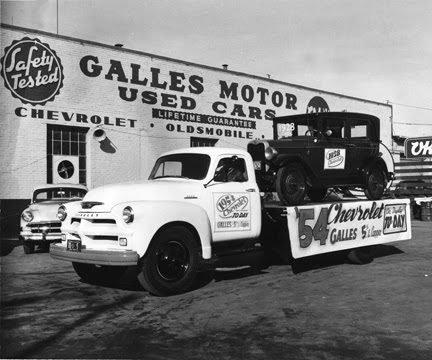
After almost a week of hanging around at the Vacation Motor Inn, writing and transcribing the extensive notes that became the chapters you have already read, Ken decided that he needed an automobile.
He’d spent most of the week in his room writing and had taken his meals either in his room or in the diner. When he did order room service the staff knew he must be deep into writing, so they didn’t disturb him for room cleaning or towels.
After three days when he hadn’t left the room at all, he called down to talk to Leon and instead Carol answered the phone. Ken asked Carol if it would be possible for her to get him a bottle of scotch and a bottle of gin and some club soda sent to the room and she said she’d send some down from the bar, which she did.
One night after midnight he’d had way too much to drink from the gin bottle and both the words he was reading in his own handwritten notes, and those that were spewing forth from his typewriter, were mangled garbage or seemed to be, so he walked down through the Inn and past it and then down Southwest until he saw a park. Walking into the play area of the park he looked up at the towering steel playset. Seated high up and silhouetted against the backdrop of the moonlit sky he saw the outline of a girl and in his imagination he thought it was Kate, although he knew it wasn’t her. Or couldn’t be.
There is a time after you’ve been to war or been in imminent danger and later you hallucinate or imagine things and they seem very real even though you are, at the same time, absolutely certain they are not real.
With some difficulty he lit a cigarette and then glanced up again to the woman that seemed to be high up in the sky. His thoughts were scrambled and then for a moment he was back in the hospital in Tokyo looking up at his nurse, past his leg lifted up in traction, her shadowed visage framed in the halo of backlight. Then a flash, and he was back at the park in Nowhere and he heard a voice and it seemed to be Kate again, though he’d only heard her sing and speak once, and she was saying “Come to me,” and “why do you wait?” He stumbled backward and then, when he’d caught himself, he stepped back toward her and said, “what do I do?” And she said, “Come to me.”
“I can’t,” he said. And he couldn’t.
In the cool of the morning, as the first light of dawn first glowed red and yellow in the eastern sky, he awoke in the park laying in the sand and no one saw him or knew about it, so he’d walked back to the Inn embarrassed and intrigued and with perfect memory of the dream.
On the days he chose to walk to the diner to eat, he had pleasant conversations with Leon McClain and at night, after the writing was done, he’d go to the cocktail lounge and have too many drinks, or on one particular starry night he let Carol take him to Bingo at the VFW, which turned out to be a pleasant respite from the writing. He still hadn’t seen Kate Laird again, and this was something he was very eager to do, especially considering the dream. Ken mentioned to Carol on the way to the VFW that he liked meeting Kate very much and looked forward to seeing her again. Carol had just smiled knowingly, with a special sparkle in her eye—the signature sparkle that marks the eye of every matchmaker in every small town in America—and said “Well, I hope you do get to see her again before she ups and marries someone else, or worse.” Ken didn’t ask what would be worse than marriage, but he’d wanted to.
Anyway, he needed a car, or wanted one, and after a week of seeing mostly the inside of his room and the environs of the Vacation Inn, he was starting to feel a little desperate to get out and investigate the rest of the town. He’d talked to Leon and John Lee Danner about buying a car and here is what he learned:
Buying an automobile in Nowhere can be problematic. Unless you get lucky. There are not many used automobiles available in Nowhere because the town is young and the people who move there tend to sell their property from their old lives when deciding to relocate. Shipping household goods would have been expensive enough (there was only one moving and storage company that delivered to the city,) and there was the problem of the town of Nowhere being too far from any of the closest big cities; Albuquerque, Lubbock, or El Paso, to make it all the way on a single tank of gas for most vehicles. There were no new car dealerships in Nowhere that might ship in truckloads of new or used vehicles for display and for sale. Most new vehicles were ordered in on a case-by-case basis by the only car lot in town, Steve Durant’s Motor Company, and were picked up in one of those bigger cities and driven to Nowhere by pairs of paid drivers who knew the idiosyncrasies of travel to the town. My friend Abe Mendoza was one who would pick up a new or used automobile, usually from Galles Motor Company in Albuquerque and drive it to Nowhere with a friend following him in Mendoza’s taxicab. Then the two would take a room in the Vacation Motor Inn and return home the next day after the delivery was made.
For me, the writer of this novel, reading and decoding Ken Halberson’s often hand-written notes, grasping the reality of automobile travel in rural New Mexico in 1954 is fraught with difficulty. Particularly this area of rural New Mexico.
Sitting in the lap of the information age, with supercars, electric vehicles, self-driving cars, auto-drive assist, and the like, it’s hard to fathom that our story is taking place near the beginning of America’s love affair with the automobile. Let me put it into perspective.
This story of 1954 takes place only thirteen years before my birth. My age, as I’m writing this, is equal to the number of years that had passed between the turn of the 20th Century and when the story is set. That is to say, the entirety of the history of the automobile in New Mexico had taken place during a period of time equal to the span of my lifetime. In February of 1900, literally zero percent of New Mexicans owned automobiles, because the first automobile ever to enter New Mexico arrived in Raton, New Mexico later in 1900. It was a steam-powered contraption called the Locomobile purchased in Denver, Colorado. The trip from Colorado to Raton, only 216 miles, took 5 days. Today the same trip takes about three hours. The Locomobile’s destination was Albuquerque, but it didn’t make it there without help. The machine was fueled by gas but powered by steam. The Locomobile ran out of gas during the trip and the owner had to find fuel (a difficulty at the time,) have it shipped back to the Locomobile, while he himself traveled on to Albuquerque by train.
The fine residents of Albuquerque were not exactly enthusiastic about the arrival of the Locomobile. The self-propelled carriage scared the horses (the main means of travel) and was dubbed the “devil mobile,” by annoyed residents. The owner, after all of his trouble getting the Locomobile to Albuquerque, was threatened with hanging for the offense, and there was an attempt to ban its use in the city.
The first crossing of America by automobile didn’t happen until 1903. In 1906, the speed limit in the state of Alabama was just 8 miles per hour. Henry Ford’s moving assembly line wasn’t implemented in automobile manufacturing until 1913. In 1919, Dwight Eisenhower (who was the President in 1954) participated in a military trip from Washington D.C. to California that was designed to test what it would take to move a military force across the United States. That trip took over two months.
The Interstate Highway Act wasn’t passed until 1956, which is two years after the events of our story. After the war, when the prospector Lew Bonaventure, or some lazy G-man, or a couple of Los Alamos government scientists, or Martians, founded the town, the “roads” around this part of New Mexico only existed as rutted dirt trails, most of them used by the military to get from one secret facility or testing site to another. The point is that we need not at this point jump to some of the loonier conjectures about the mysteries of Nowhere, New Mexico. Several of them can be explained merely by the fact that Nowhere had sprung up in the middle of a desert, far from any large city, not on the way from anywhere to anywhere, with little to no infrastructure to support the town. The fact that Nowhere was a cosmopolitan city with all the modern amenities and enjoyments was the miracle that needed investigating.
The question wasn’t “why was it so difficult to get an automobile in Nowhere, New Mexico?” but, “why was it so easy despite the evident hindrances?”
Which is all to say… Ken Halberson got himself an automobile.
***
It might do here to take a quick side journey to get some context on Ken Halberson’s life. Our journalist was a war veteran, well-traveled, and wise to the ways of the world. He’d been seriously wounded three different times, and near death a few more times than that. He’d interviewed many of the luminaries of the day including Joe DiMaggio, Sinatra, and Francisco Franco. He’d talked with Picasso in Seville and had run with the bulls in Pamplona. He’d spent a month running cattle in Patagonia and had gambled at the Nacional in Havana with Meyer Lansky looking on. He could call Liz Taylor and she’d send a plane through the night to pick him up in a field outside of Nowhere to fly him back home if he wanted to. Rumor had it, and the notes didn’t admit it—nor would Ken Halberson had ever told anyone (Gentlemen never tell)—he’d had romantic relations with Liz and Rita Hayworth too. The general rule is that Hollywood bombshells are attracted to good writers and bad bullfighters.
Reading the background on everything he’d done and experienced and suffered in his life heretofore, it was easy for me to believe he was—here in 1954—a man of my own age. Mid-fifties. He’d already lived a full life. He was born way back when Calvin Coolidge was President, Hollywood was just getting on its feet, and only four years had elapsed since the first ever broadcast of a radio news program. His mom was born in 1894 and his father was born only twenty years after the end of the Civil War. Ken was ten years old in the middle of the Depression and listened to Roosevelt’s fireside chats on the radio. He turned 20 in a hospital in France after being wounded in battle. In a few months hence he would turn 30 living in a small apartment in downtown Nowhere. All of this is to say, that the old veteran writing in his notes about his war wounds while limping downtown to try to buy a car was only a 29-year-old man.
***
The car adventure started with a walk of some length, which is no small thing with my leg blown to bits just two years ago. During the time of the dozen-plus surgeries to rebuild the leg, fragments of bones, ligaments, and other tissue from other parts of my body were sown or grafted or even bolted to parts that had been mauled by shrapnel. Parts that were no longer there were dearly missed, and though the whole thing came back together surprisingly well despite the challenges, there was still some awkwardness when I had to walk more than a half mile or so. In my normal life, walking into a shop or to a cab, you’d have to be paying really close attention to detect any limp. Once I had to engage in a stroll of any length, a slight limp appeared, like when a tire with a bulge can be fine when you’re just rolling slowly but will start rattling the car over a certain speed.
I could easily have arranged for a ride to the car lot, but I wanted to surprise Leon and Carol by pulling up under the Vacation Inn’s covered front entry with my new automobile. I was under the misapprehension that it would be easy to buy a car and drive it home on the same day.
When you walk on Southwest Drive, the main route from the Inn to downtown, you walk northeast since the angled streets were named for their direction relative to downtown.
The walk wasn’t difficult, and the weather was perfect. Blue skies reigned once again with a few, light and puffy clouds and the air was cool, about 54 degrees, but not cold. The streets of Nowhere had sidewalks, and for all the world I could imagine I was in Las Vegas, Nevada or some newly sprawling suburb in Southern California as I walked. Cars passed me, Fords and Chevrolets and a Nash Metropolitan, and now and then a vehicle would pull over and the driver or another occupant would ask me if I needed help or if I required a ride somewhere. I always thanked them and told them “No, I am just taking a walk,” and they’d smile and wave and pull off while looking back at me in their rearview mirrors with curiosity. Americans are in love with their automobiles and can’t fathom why someone would want to walk.
I looked north while crossing Hazelnut and in a gap between bare trees I could see the faint outline of gray-black mountains in the distance barely peeking up over rooftops and it was my first reminder in some time that the rest of the world still existed out there and that beyond those mountains somewhere was Albuquerque and the possibility that someday I’d leave this place and fly back to New York.
And there was a cart there at the corner of Crow and Hazelnut where a man with a white paper hat sold hot dogs and peanuts to customers coming out of the businesses on Crow and those walking down from the huge papermill on Hazelnut. I had no idea where the papermill got trees to make paper but that probably wouldn’t make it into the article anyway.
At Chestnut I saw the Bistro District that Carol had told me about, and there were cafés with sidewalk seating and flowers and lush greenery, grapevines stretching over gazebo roofs, more colorful flowers in pots and shops with signs like “Margot’s Finery” and “Old Castile Leather and Cheese.” People were seated at wrought-iron tables and ate meals on white plates or drank coffee and chatted and laughed in the warming sun. From one of the cafés I heard the strains of When the Lights Go On Again All Over the World which took me back to Paris after the war.
As I walked, I imagined that the sidewalks were paved with gold, but it didn’t take much imagination. The whole town seemed golden to me at that moment.

Next, I passed the sandlot with the kids playing ball and when I stopped for a moment to watch, it took me back to my own childhood back in Schenectady before the war and it was the Depression so we’d make a ball out of fish wrap and tape and use sawmill slats for bats.
I watched the boys play for a while before they saw me, then I heard them shout and they were throwing down their mitts and bats and running toward me.
“Mister! Mister!” they shouted. “Hey, Mister!”
One hollered, “We heard you were from New York! Do you know Mickey Mantle? Do you know Whitey Ford?!”
“I don’t know them because I live in another part of New York State,” I said. “But I do know Gene Woodling. He’s in the same outfield with Mickey Mantle. He taught me how to bunt.” Which was true. Back when I was young in Schenectady, baseball players didn’t make much money and to augment their income they often taught clinics in and around New York.
“Gene Woodling! He taught you how to bunt?”
“Gene Woodling! Can you imagine?”
“Can you get Mickey Mantle’s autograph?”
“I probably can’t,” I lied. Even though I knew I probably could. I made a mental note to telegram Edward Kramer Thompson, Esquire, and tell him the job here required a dozen autographs from Mickey Mantle. But I didn’t want to get their hopes up. I didn’t even know if there was a telegraph office in Nowhere.
“Aww, Mister! Will you show us how Gene Woodling taught you to bunt?”
So, I spent the next half hour teaching a bunch of sandlot kids how to bunt the way Gene Woodling taught me. Then I excused myself and told them I’d stop by again soon to see how they were doing, and I promised them that next time I’d tell them the story of how Leo Durocher, the coach of the Giants, had punched me in a bar one night. Just the promise of that story brought squeals and screams of delight, and the little scamps ran back to their game telling themselves the story of the New York stranger who’d been lucky enough to be punched by Leo Durocher.
When I got to Washington Street, just past the Town Square, I crossed over and walked north another seven blocks on Washington to 7th Avenue, then three blocks east to Madison where Steve Durant’s Motor Co. was located.
This area was more residential with the exception of the businesses on the north side of 7th avenue which included Durant’s. The houses were a little more expensive here and the lots were a little larger. Not much, but a little.
Steve Durant was an interesting fellow, large, just on the heavy side of obese, and a fellow former marine. He educated me on the difficulties of procuring a vehicle in Nowhere, the same basic information I’d learned from Leon and John Lee. Not insurmountable, of course, but difficult.
“Whatever I get,” I said, “I’ll be charging it to LIFE magazine, and particularly to the account of Edward Kramer Thompson, Prince of an Editor and Master.”
“Oh, that’s no problem. No problem at all,” Steve said.
I figured old Ed might consider it a problem, but he’d go along with it. What did he expect? Me to stay in a town for a year and bum rides everywhere to do my research? He’d argue about it, but in the end, he’d pay the bill because he knew it was something I needed in order to do the job. Besides, when my tour of duty in Nowhere ends, they can always sell the car. I did, however, give myself a budget limit of $1,500. I knew that a new car in Schenectady would cost over $3,000 so I set myself a ceiling of half that.
Steve Durant showed me the exactly three used cars he had access to. The first was an old ’41 model Studebaker that was black and boxy and impractical. The front seat had been pulled out and a sort of ratty sofa had been installed for seating. The second was a rusted 1943 flatbed pickup with a broken windshield. Steve assured me that a new windshield had been ordered up from El Paso, but he didn’t expect it for a month. The third automobile was quite nice. A 1951 Packard 250 convertible, kind of a bright canary yellow. It checked off all my boxes except the color, but Steve told me that the unique difficulties of getting a used car to Nowhere, or shipping in a new one, were such that he couldn’t possibly take less than $2,500 for the ’51 Packard. The other option would be for me to wait until someone else in Nowhere ordered a new car (which might happen any day) and buy their old car. In which case I still might be waiting from a few weeks to a month for delivery of the new car before I could take possession of the old one. And the price might not be any cheaper at all.
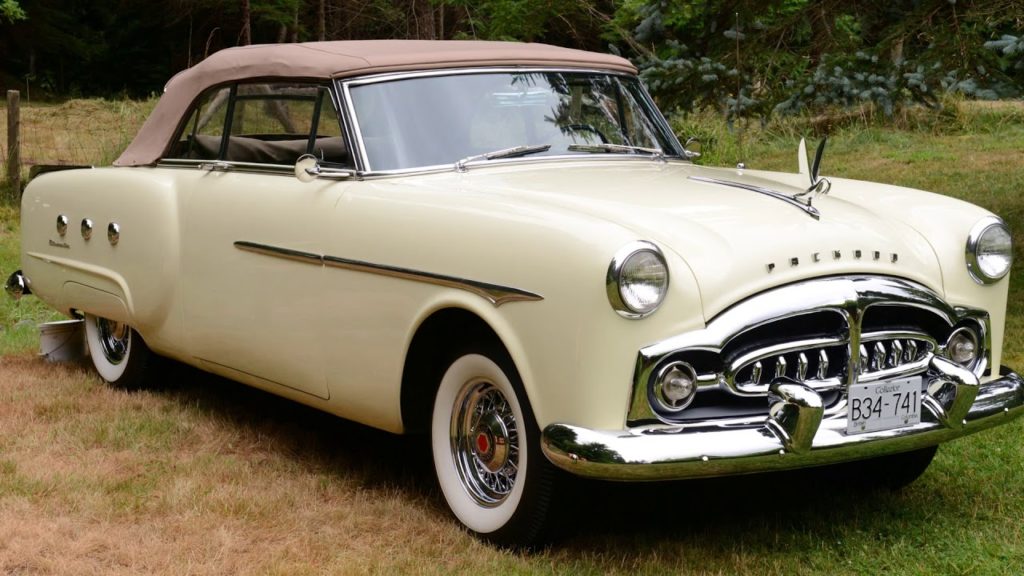
I offered him $2,250 for the Packard, way over my limit, and he sighed deeply like I was asking for a night with his daughter, then smiled and shook my hand. He said he only took my offer because we were both marines and that he wouldn’t have sold it to me at that price otherwise. He called a boy up from the service garage. The boy came up dressed in a service uniform marked by grease and oil and dirt, wiping his hands on a towel that looked to be dirtier than the uniform. Steve threw him the keys and told him to get the Packard washed and gassed up and the oil changed and that we’d be going down to the Dipsy Doodle to do the paperwork and to drive it over there when it was finished.
“And don’t get any of that grease on the seats, Bill. Put a tarp down!”
Steve turned out to be a great guy for someone who really and truly believed that he died back in the war. I’ll get to that.
The Dipsy Doodle was a drive-up burger joint built in the modern style, with soaring angular roofs jutting upwards and out sharply far over the parking area. The sign was a big multi-colored starburst fired from a rocket with the stylized words “DIPSY DOODLE” spelled out in smaller starbursts. Carhops on roller skates wearing what looked to be stewardess hats moved smoothly in and out of the building deftly carrying red trays loaded with burgers, fries, and shakes. The trays could be attached to the doors or hung from the windows of the cars and music played through the speakers hanging from the high-angled roofs but like in the other venues I’d been to around Nowhere, it wasn’t rock-and-roll playing, it was Glenn Miller’s A Pink Cocktail for a Blue Lady.
Steve parked the car—a newer model Chevrolet Bel Air convertible, (aquamarine with white interior)—and told the carhop we’d be eating inside.
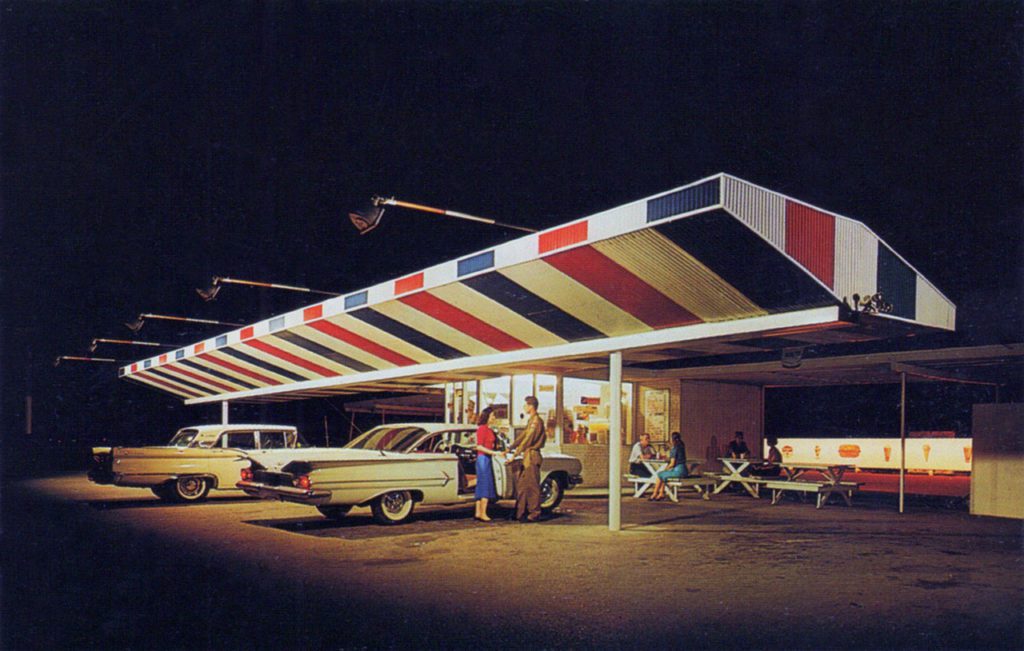
We sat in bright red booths and told old corps jokes while Steve drew up the paperwork, and I provided the information necessary to send the bill and the paperwork over to Ed Thompson. Then I handed Steve a check drawn on the LIFE account for $250 payable on demand. The money wonks at LIFE, especially Edward Kramer Thompson, would kick and scream but they’d pay it and that was that. When they were willing to send Hemingway $75,000 in advance for a book he’d been promising for over a year and might never deliver, I think they can provide me a used car. Let ‘em take it out of my pay, I don’t care.
I drew a weekly stiped from LIFE that was automatically deposited into my account when I was on assignment. The stipend was to cover my basic living expenses and wasn’t a salary. Other than the stipend, I would eventually receive payment for the article once it was received and accepted. In this case, I could expect to sell my finished article for about $10,000. Anytime there was any extraordinary expense that was legitimately work related, I could write a check on the LIFE magazine account or, if there was a telegraph office, I could call the magazine and have funds sent via Western Union. In this case I didn’t want Thompson to find out about the transaction until after it was too late, so I’d not even inquired about a telegraph office. I’m sure there had to be one.
I ordered a cheeseburger, fries, and a strawberry milkshake. Steve ordered three hamburgers and a Coca-Cola. He told me he didn’t worry about overeating or his weight because he’d already died at Iwo Jima in 1945. He’d been part of the 25th Marine Regiment, 3rd battalion landing force on 19 February, and he told me he’d been shot and killed there near the quarry. He believed he died that day and that everything that had happened after that was his purgatory culminating in him arriving in Nowhere in 1950. Which to him was heaven. I suppose people deal with trauma their own way, so I didn’t ask how he reconciled selling an old Studebaker with a sofa for a seat with being in heaven. The cognitive dissonance was only mine. He was a happy man with no confusion and that was all that counted. I told him about getting through the war only wounded a few times but then getting my leg being near blown off as a journalist and he nodded and told me, “That was when you died.”
He believed everyone in Nowhere was already dead.
I asked him questions about Nowhere to get a better feel of the town, and his answers obviously didn’t harmonize with any biblical or historical idea I had about being dead and in heaven.
“Nowhere came down from heaven after the A-bomb detonated, you see? Before that it was on Mars,” Steve said. “Lew Bonaventure wasn’t a prospector. He was a Martian superintendent. The gold is a myth for stupid people because they haven’t accepted the fact that they’re dead yet.” He ate fries and looked at me and truly believed and was convinced of all of it.
He told me that heaven wasn’t a place where everyone sat around on clouds and played harps. You still had a life to live and when you died in this heaven you went to the second heaven and so on. Each one better than the last.
“That’s why I eat whatever I damned well please.”
I ordered another cheeseburger and Steve smiled and nodded. I didn’t believe I was dead yet, but I liked his certainty, and if I ended up getting a date with Kate Laird I’d agree it was a remote possibility that I was actually in heaven.
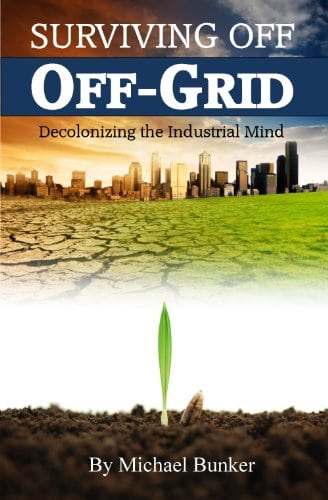
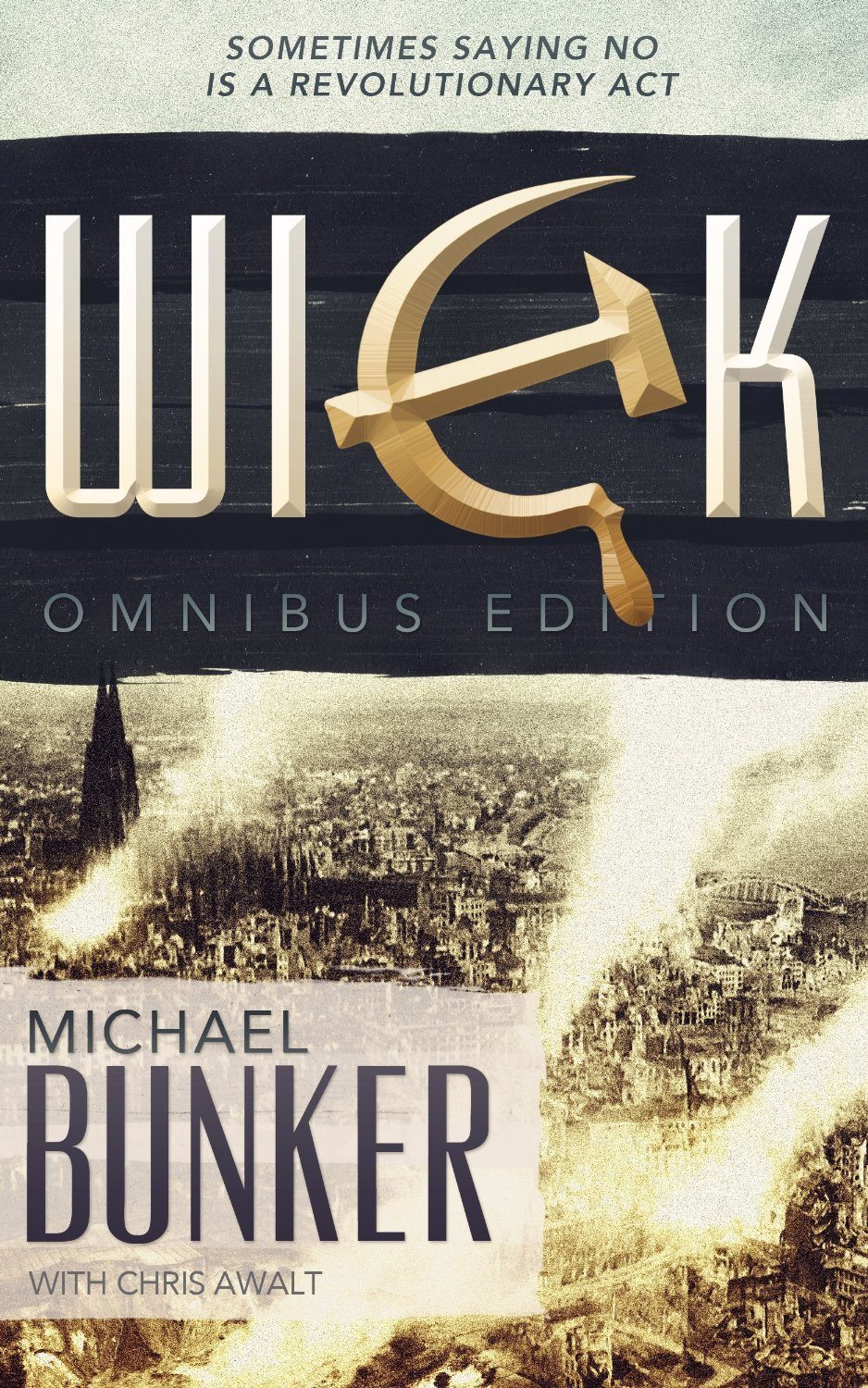
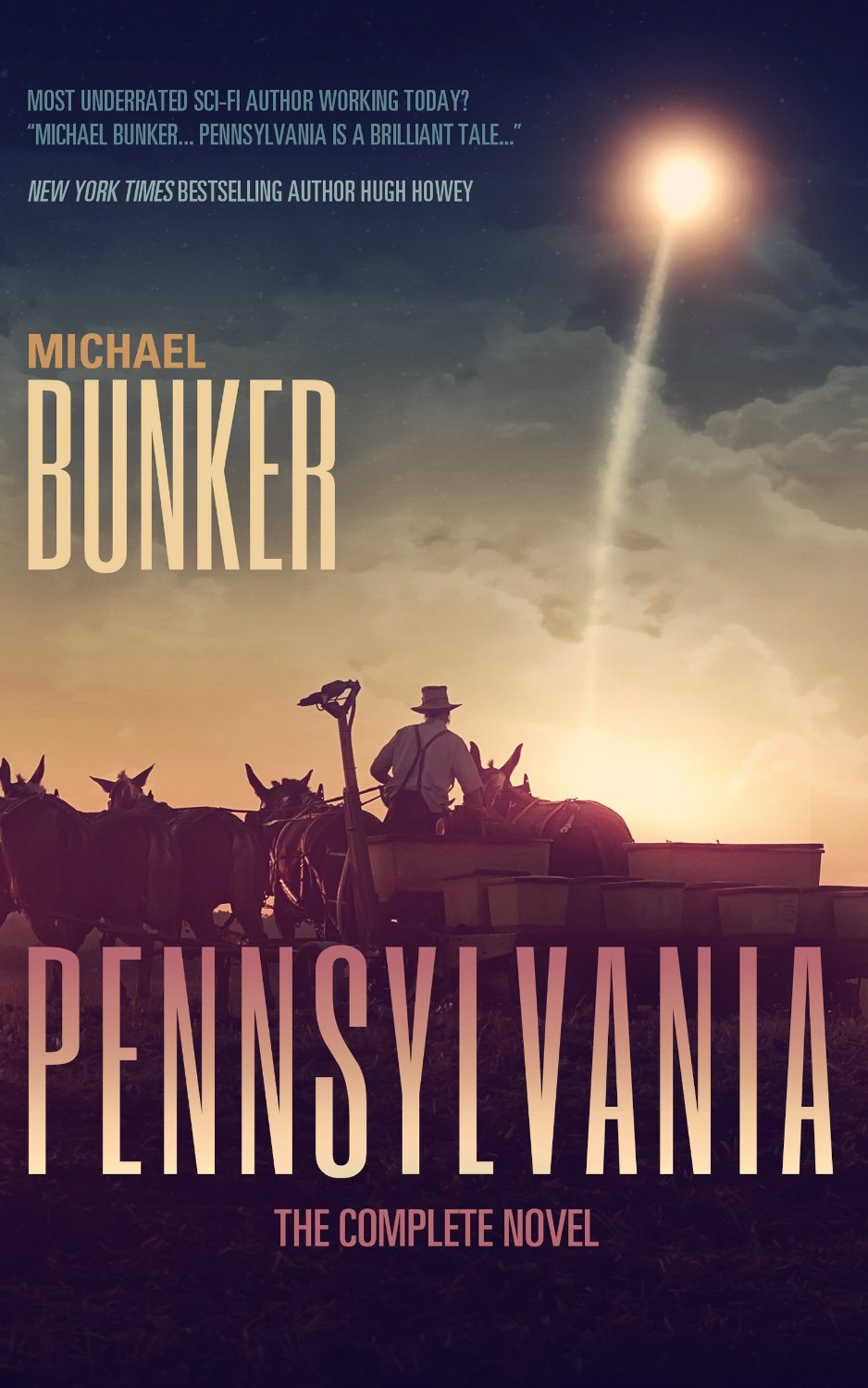
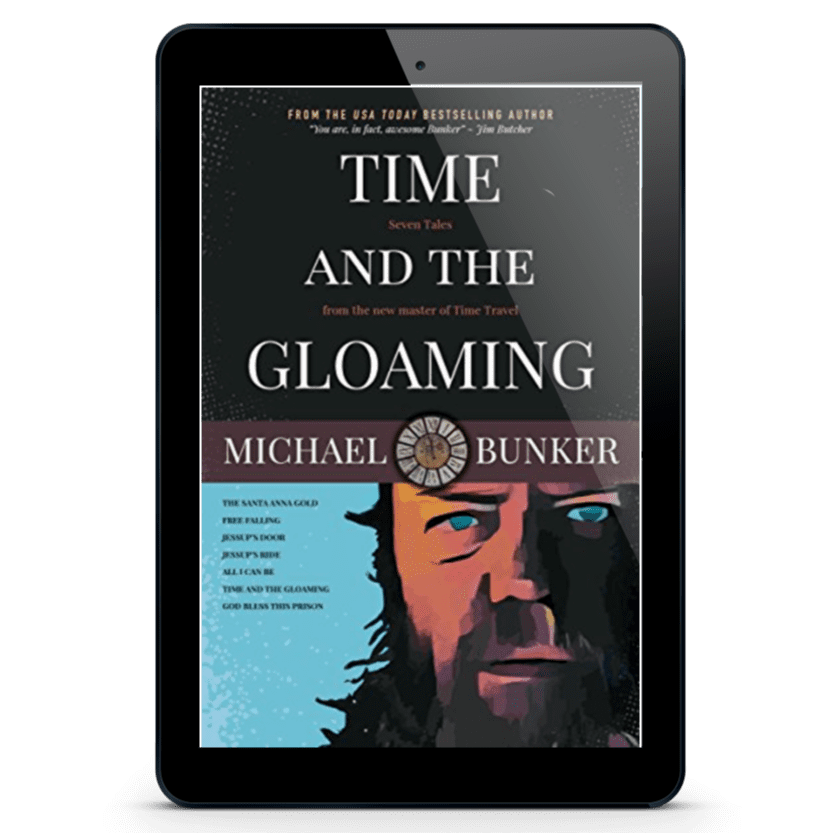
I had to LOL when I read the “sawmill slate for bats” line. I just saw Alabama in concert a little over a week ago and that song was on the playlist. I happened to be wearing the concert t-shirt as I read that line. Thanks for the giggle!